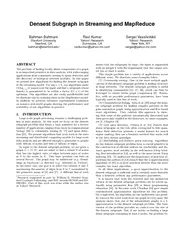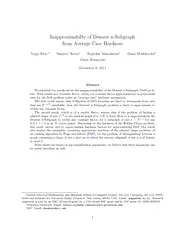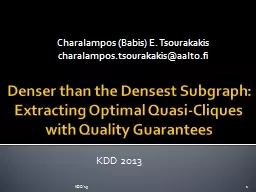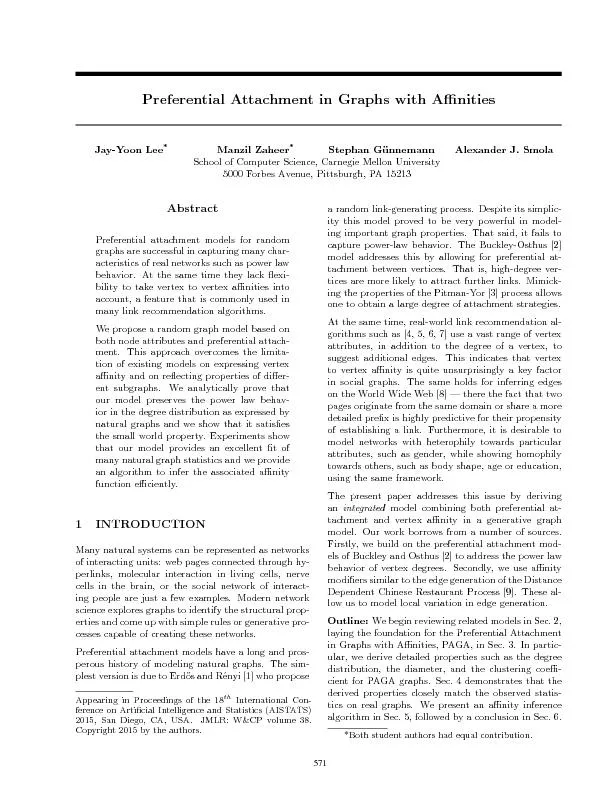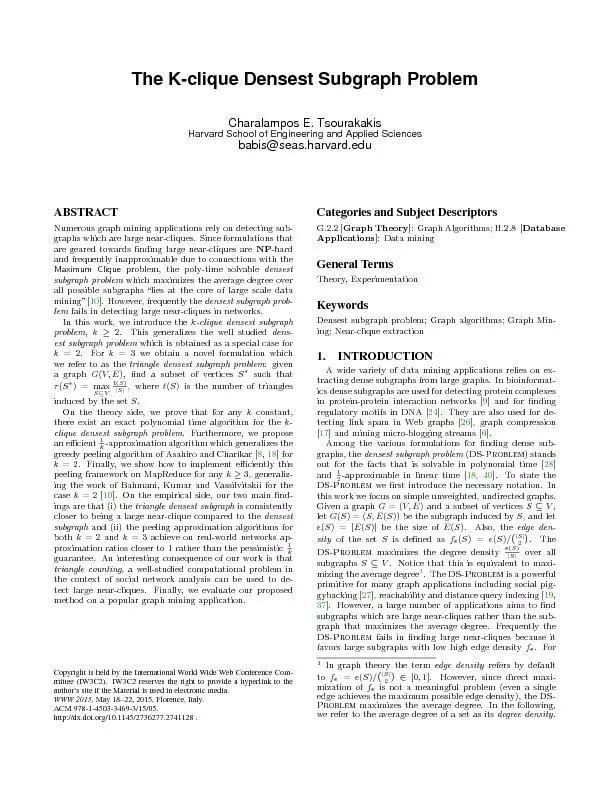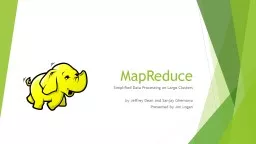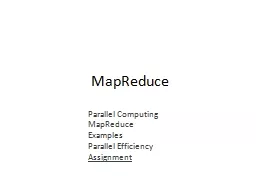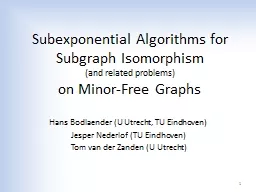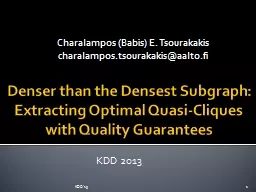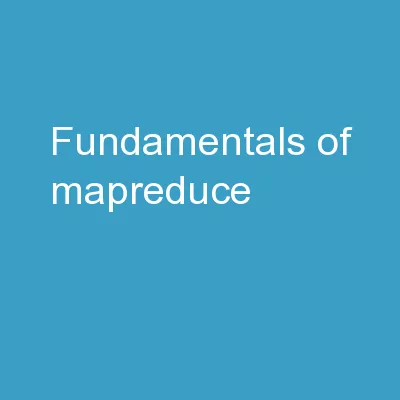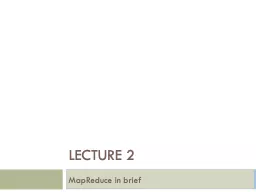PDF-Densest Subgraph in Streaming and MapReduce Bahman Bah
Author : kittie-lecroy | Published Date : 2015-05-27
edu Ravi Kumar Yahoo Research Sunnyvale CA ravikumaryahooinccom Sergei Vassilvitskii Yahoo Research New York NY sergeiyahooinccom ABSTRACT The problem of nding locally
Presentation Embed Code
Download Presentation
Download Presentation The PPT/PDF document "Densest Subgraph in Streaming and MapRed..." is the property of its rightful owner. Permission is granted to download and print the materials on this website for personal, non-commercial use only, and to display it on your personal computer provided you do not modify the materials and that you retain all copyright notices contained in the materials. By downloading content from our website, you accept the terms of this agreement.
Densest Subgraph in Streaming and MapReduce Bahman Bah: Transcript
Download Rules Of Document
"Densest Subgraph in Streaming and MapReduce Bahman Bah"The content belongs to its owner. You may download and print it for personal use, without modification, and keep all copyright notices. By downloading, you agree to these terms.
Related Documents

